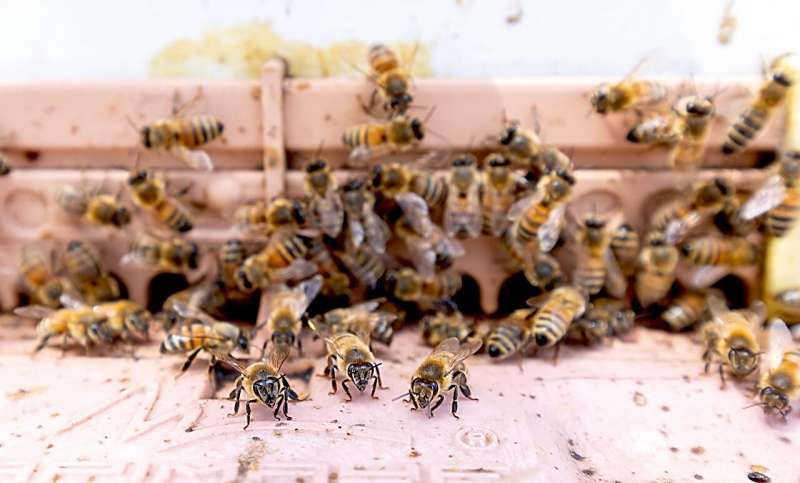This article has been reviewed according to Science X's editorial process and policies. Editors have highlighted the following attributes while ensuring the content's credibility:
fact-checked
peer-reviewed publication
trusted source
proofread
Bees and other flying insects at greater risk of extinction as they migrate to higher elevations in changing climate

In response to rising global temperatures, many plants and animals are moving to higher elevations to survive in cooler temperatures. But a new study from the University of Colorado Denver (CU Denver) and Georgia Institute of Technology (Georgia Tech) finds that for flying insects—including bees and moths—this escape route may have insurmountable issues that could mean their doom.
The research team examined more than 800 species of insects from around the world and discovered that many winged insects are moving to higher elevations much slower than their non-flying counterparts. This is because the thinner air at higher elevations provides less oxygen for species to use. Because flight requires more oxygen to generate energy for movement than other styles of movement, such as walking, these species are migrating more slowly.
The team's findings were published in Nature Climate Change. Jesse Shaich, postbaccalaureate student at CU Denver, is also a member of the research team.
"When we think about where species will be able to live under climate change in the coming decades, we need to remember that animals are sensitive to more than just how hot or cold they are," said CU Denver Assistant Professor of Integrated Biology Michael Moore, Ph.D., who led the study.
Declining insect biodiversity has direct impact on humans
If flying insects' native habitats get too warm too quickly, and they can't find a suitable alternative or adapt in time, that will likely lead to their extinction. Beyond just being bad for the bugs themselves, loss of insects is bad news for humans as well.
Most crop pollinators are the flying species the researchers expect to be vulnerable, and their extinction would be catastrophic to the global food supply. Not only would this have implications for agriculture and food supply chains, but similar challenges are likely true for other species that need a lot of oxygen to live.
"Our Earth's biodiversity is rapidly declining, especially among insects. The global loss of insects will be ecologically catastrophic, so we urgently need to understand why and how this is happening," said James Stroud, Ph.D., a Georgia Tech Assistant Professor of Biological Sciences.
Broadening research on high elevation challenges
To conserve as many species as possible, researchers need to grasp the full scope of challenges plants and animals face, whether they can overcome these challenges, and to predict the locations where they can survive. High elevation environments are also difficult for new species because of the scarcity of food, stronger winds, more extreme cold snaps, and increased ultraviolet radiation.
Moore concludes, "If we want to design effective conservation strategies, we must consider a broader range of environmental factors that species need to live."
More information: Michael P. Moore et al, Upslope migration is slower in insects that depend on metabolically demanding flight, Nature Climate Change (2023). DOI: 10.1038/s41558-023-01794-2
Journal information: Nature Climate Change
Provided by University of Colorado Denver


















